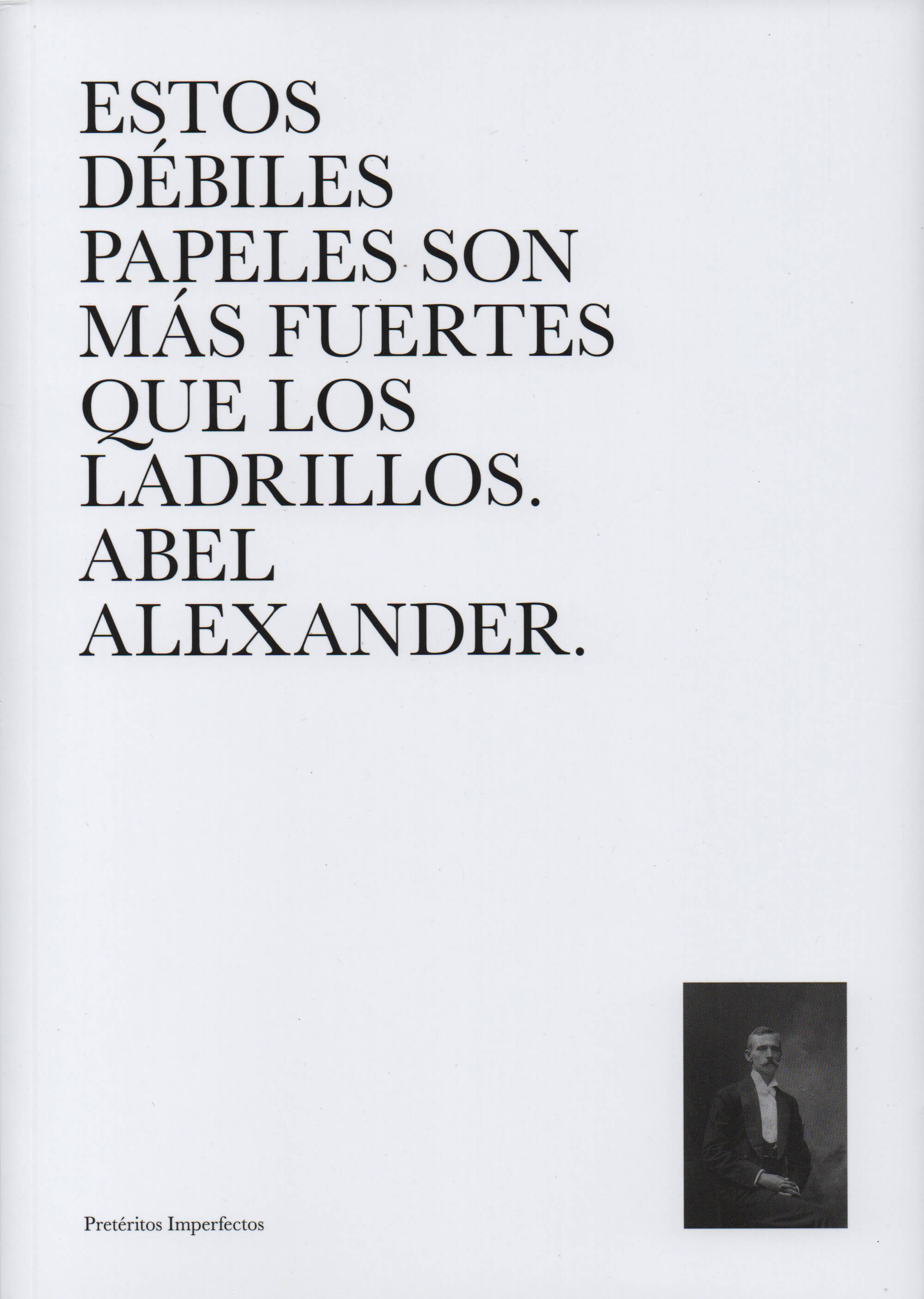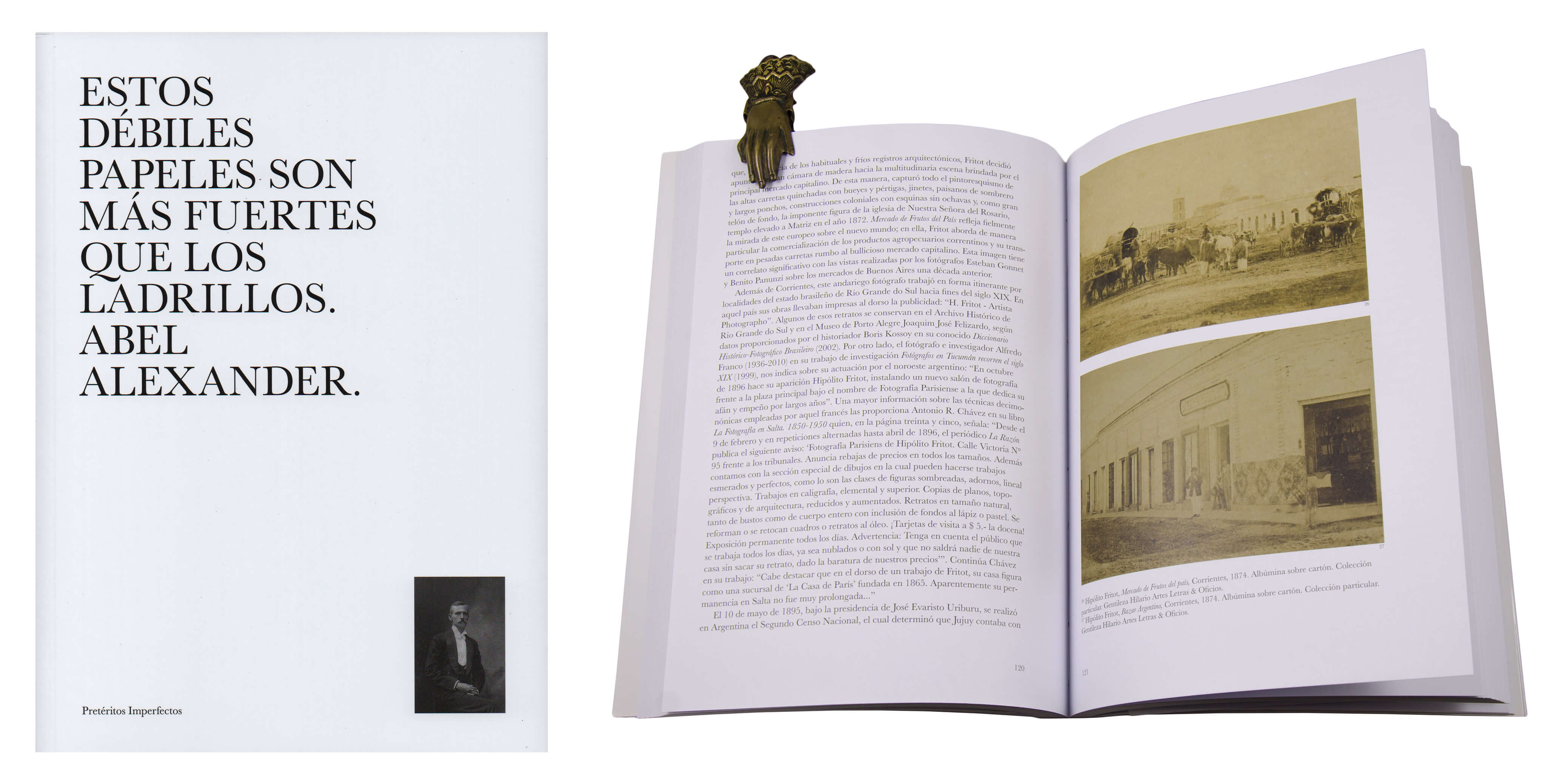
These weak papers are stronger than bricks.
Abel Alexander. ArtexArte, Pasado Imperfecto Collection. Buenos Aires. 2021.
Octavo (24 x 17.1 cm), 241 pp., 1 sheet.
A DESERVED AND NECESSARY BOOK
Unfairly vacant for a long time, these days the book "These weak papers are stronger than bricks", by Abel Alexander, has come out to take its place in the best libraries on old Argentine photography. Book with the seal of Ediciones ArtexArte, of the Alfonso y Luz Castillo Foundation, in its Pretéritos Imperfectos collection, with a foreword by Professor Laura Malosetti Costa.
The 244-page volume is of extraordinary graphic quality and is organized into four sections dedicated to the history of our photography, mainly from the 19th century. The first of them is entitled Signs, and deals with thirteen authors, some very relevant and notorious, such as Alejandro Witcomb, Christiano Junior or Samuel Rimathé, and others practically unknown or very relegated by our historiography, such as Herbert Kirchhoff or Lucien Canton, rescued by the author. The second part, Geographies, traces the history of photographic activity in six towns in the province of Buenos Aires: Balcarce, Benito Juárez, General Lavalle, Mar del Plata, Saladillo and San Antonio de Areco. The third chapter, Communities, is dedicated to the photography of four human groups of diverse nature: Afro-Argentines, Gauchos, Italians and Masons. Finally, an Appendix that serves as a fourth chapter, deals with two disparate themes: stereoscopic photography and erotic daguerreotypes. We must emphasize that the Introduction that Abel offers us at the opening of his book describes with admirable conciseness the history of the birth of photography and its nineteenth-century technological development, parallel to its introduction and rapid settlement in our country.
The variety of issues that the book covers is a good example of the author's vast knowledge of photography from the past in Argentina, and the detailed information transmitted to us by each of his essays, written with a fluid and attractive style, good evidence of its professional historical rigor.
I have known, appreciated and admired my colleague Abel Alexander for many years, and I attest that the works that we can enjoy and value in this anthology are just a sample - brief but very well selected, for the rest- of such an extensive and persistent as the enthusiasm that animated our friend from the beginning of his interest in the old photography of our territory. Furthermore, this work is not exclusively authorial, but in partnership with other researchers and editors, which shows the collaborative and generous spirit of our author –of which I was a lucky beneficiary on more than one occasion–, where the demands of a peremptory ego they are conspicuous by their absence.
That generosity, on the other hand, not only draws on an innate personal nature, but on an elaborate and robust cultural awareness, which includes in the expansion of active interest in the history of photography, the master key to boost the creativity of each one. of current and future researchers. This also explains why Abel continues to tirelessly promote the organization of the Congress on the History of Photography for thirty years –now without the company of his two initial cronies, the dear and remembered friends Miguel Ángel Cuarterolo and Juan Gómez–, whose Memories they constitute a kind of essential reference encyclopedia for researchers and chroniclers of the national and also Ibero-American photographic past, since the Congresses expanded their geography of study.
Abel's activity as a promoter of national photographic history had other original and unique consequences: the organization of associations of specialists and collectors of photographic cameras and old photographic processes, of informal and voluntary constitution, but of extraordinary benefit at the time of exchanges of information that feed and enrich collective knowledge. I must add that in all this dedication of our friend he never mediated any interest in what would have been a well-deserved –although obviously utopian– material retribution. Abel, and all veterans like him, have generally gone out of our way for "love of art", for genuine enthusiasm for the thing itself and for the evident absence of institutional interest -even in the academic sphere, until not many years ago- in the photographic historical theme.
For all that has been said, we hope that "These weak papers are stronger than bricks" will result, in the shortest possible time, the initial publication of the set of essays by our dear friend Abel Alexander, most of which still remain unpublished or scattered in publications that, although they were made known at the time, today they act as guardians who make invisible what would be an invaluable contribution to the study of the history of our photography.
By Luis Priamo
Buy now
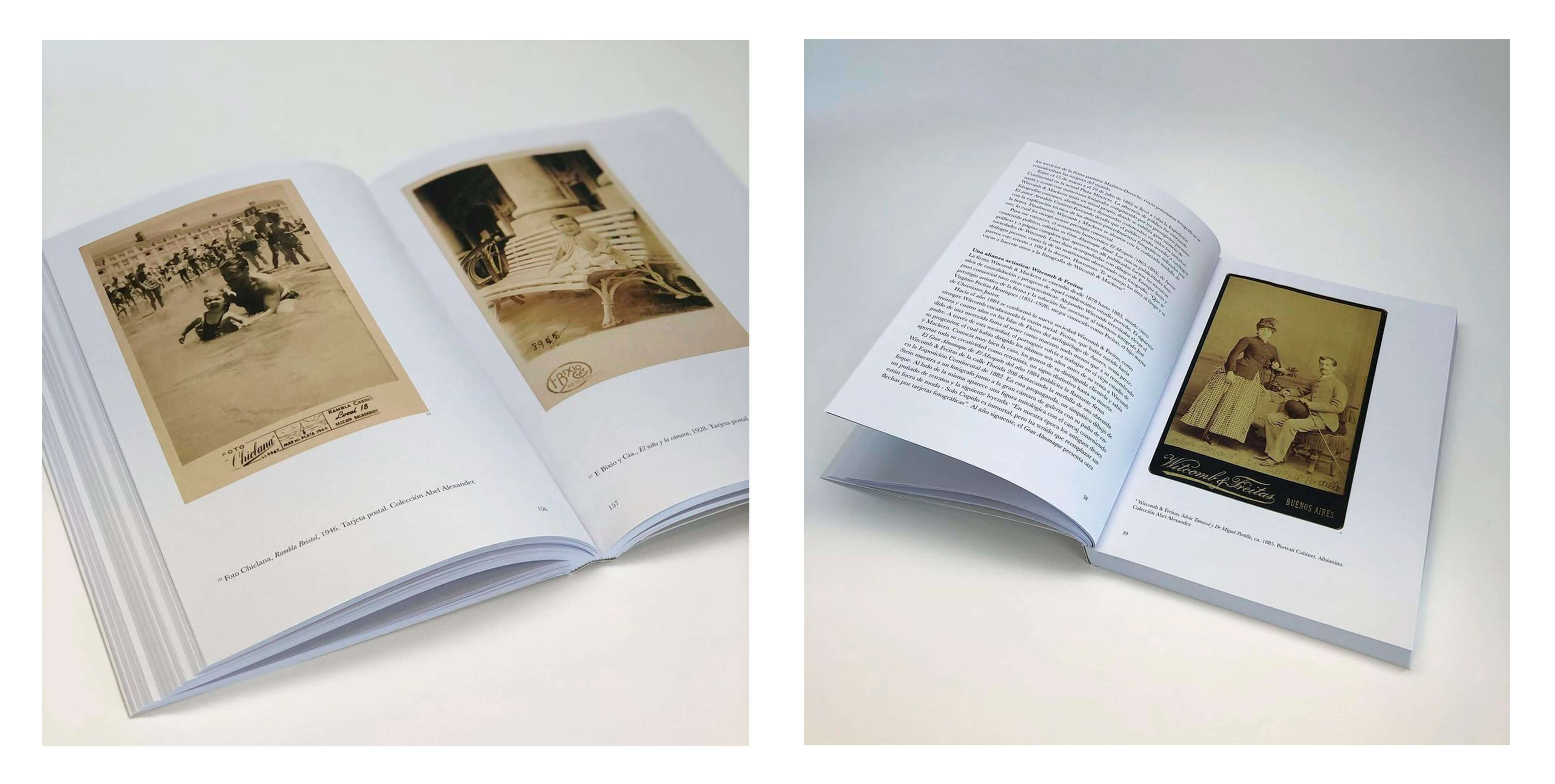
OTHER READINGS SUGGESTED BY DON HILARIO
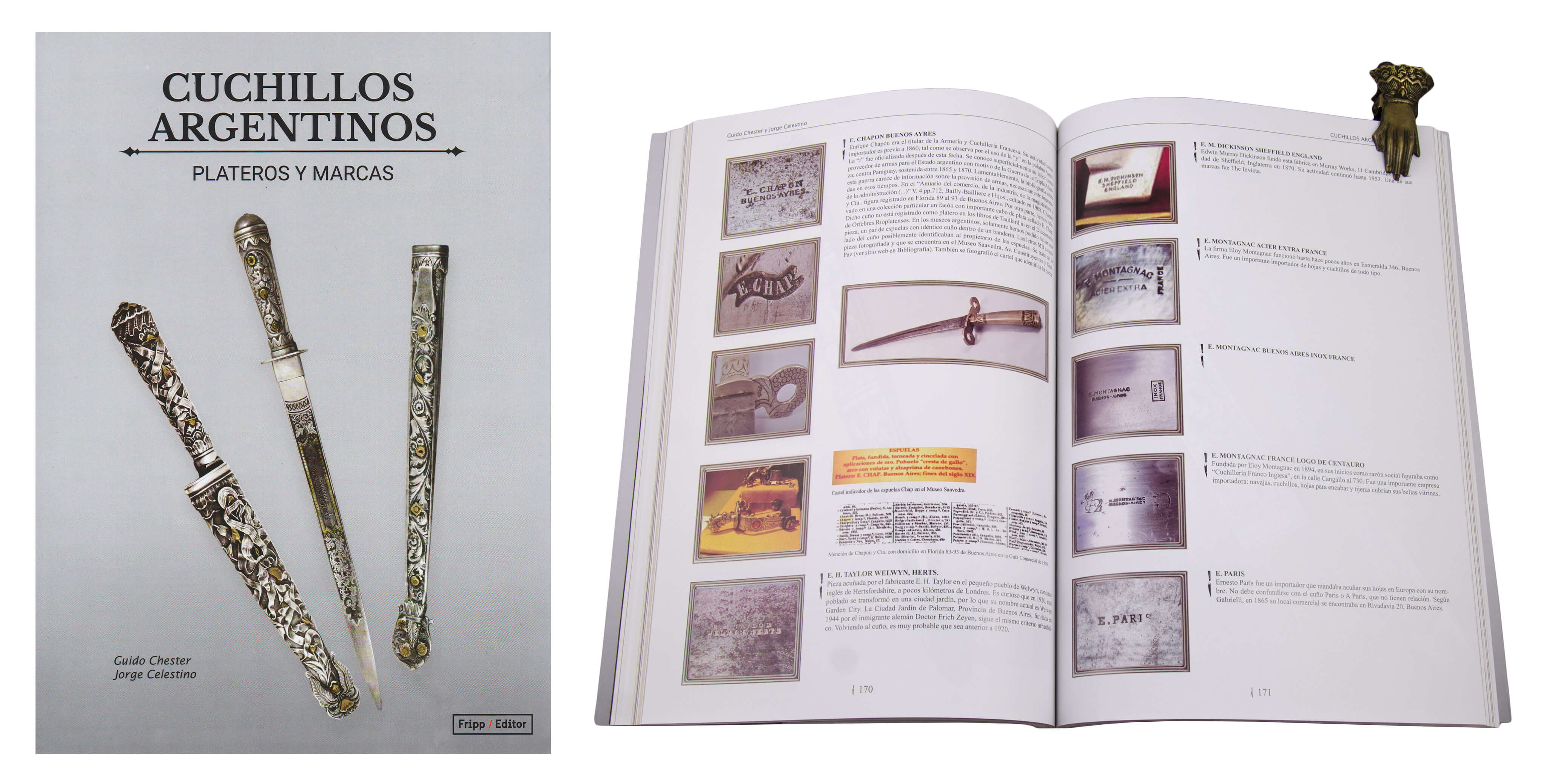
Argentine knives. Silversmiths and brand
Guido Chester - Jorge Celestino. Fripp Editor. Buenos Aires. 2021.
Quarto (29.6 x 21.1 cm), 288 pp. Very illustrated work.
Buy now
The authors ascend a new step in tackling such an attractive subject for Rio de la Plata collecting. His third title on this subject is the result of new research -his own and in collaboration- and the contribution of other invited specialists. In addition, they have managed to make their pages a valuable setting for the exhibition of a group of silversmiths recognized for their work in Creole cutlery.
The register of stamps -with their images- evolves with new findings and is enriched with information that is highly appreciated by collectors and other researchers. In this regard, some brands gain prominence by deserving exclusive chapters, such as Herder, Kirschbaum and Weyersberg, and La Movediza.
In addition, Chester and Celestino broaden their horizons through brief essays on the old armories of Buenos Aires and the sabers used in Argentina throughout the 19th century.
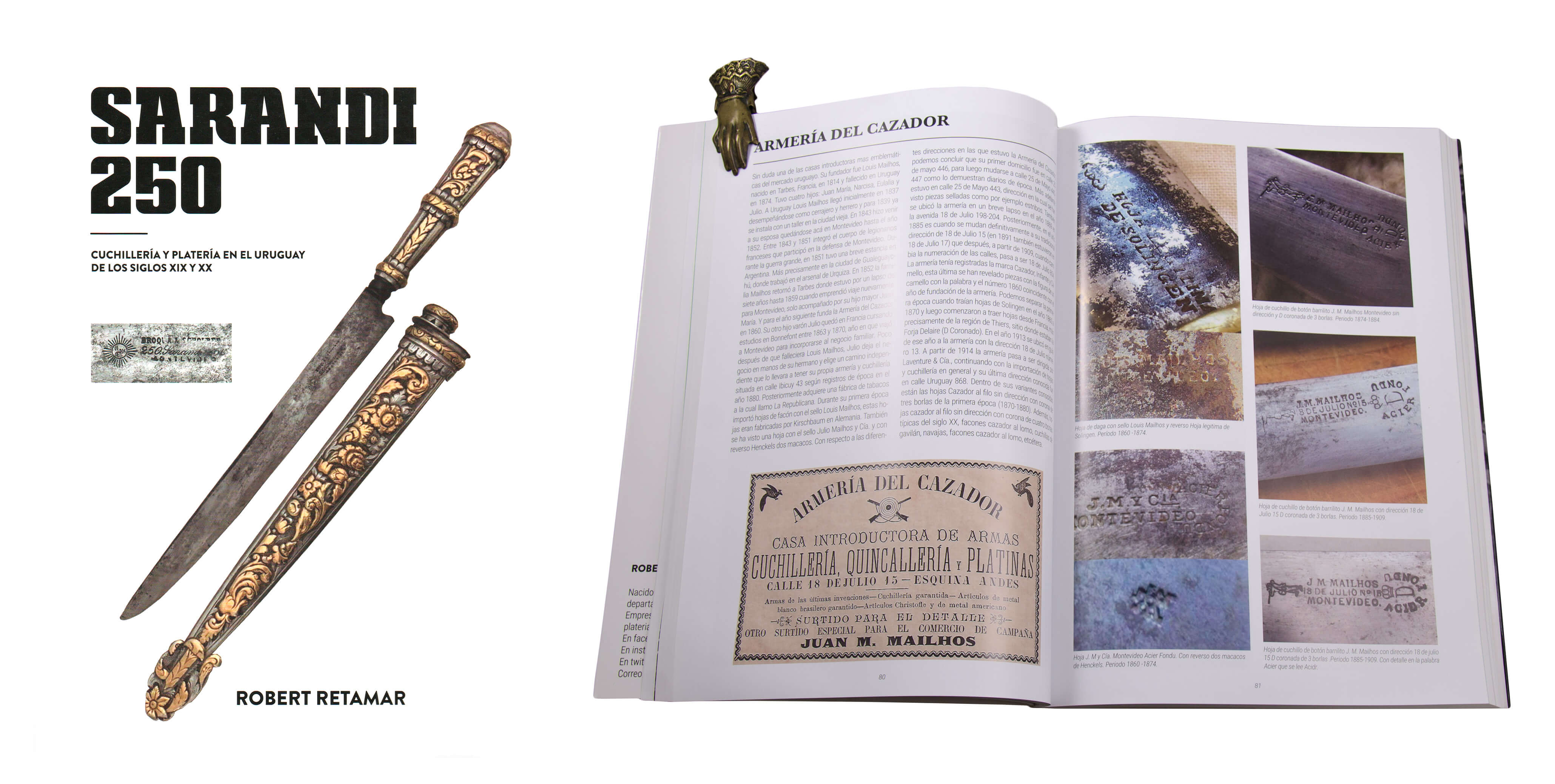
Sarandí 250. Cutlery and silverware in 19th and 20th century Uruguay.
Robert Retamar. Uruguay 2020.
Quarto (29.7 x 20.7 cm), 256 pp., 2 sheets. Very illustrated work.
First book by this enthusiastic researcher; an interesting contribution to the knowledge of Uruguayan goldsmithing and in particular, of its manifestation in the Creole knife. Retamar manages to gather valuable information that, for obvious historical reasons, is linked to Argentina, with commercial firms that operated on both banks of the Plata. This contribution already makes this title an unavoidable source of reference for collectors, researchers and museum curators.
However, in its first pages we find as an index a tour of the entire content of the book and, unfortunately, the different brands are not ordered alphabetically, which forces us to go through the entire list in each search. A detail that will undoubtedly be saved in new editions. The personality of the author -a tireless researcher- makes it possible to forecast an expanded edition, and it will be welcome.
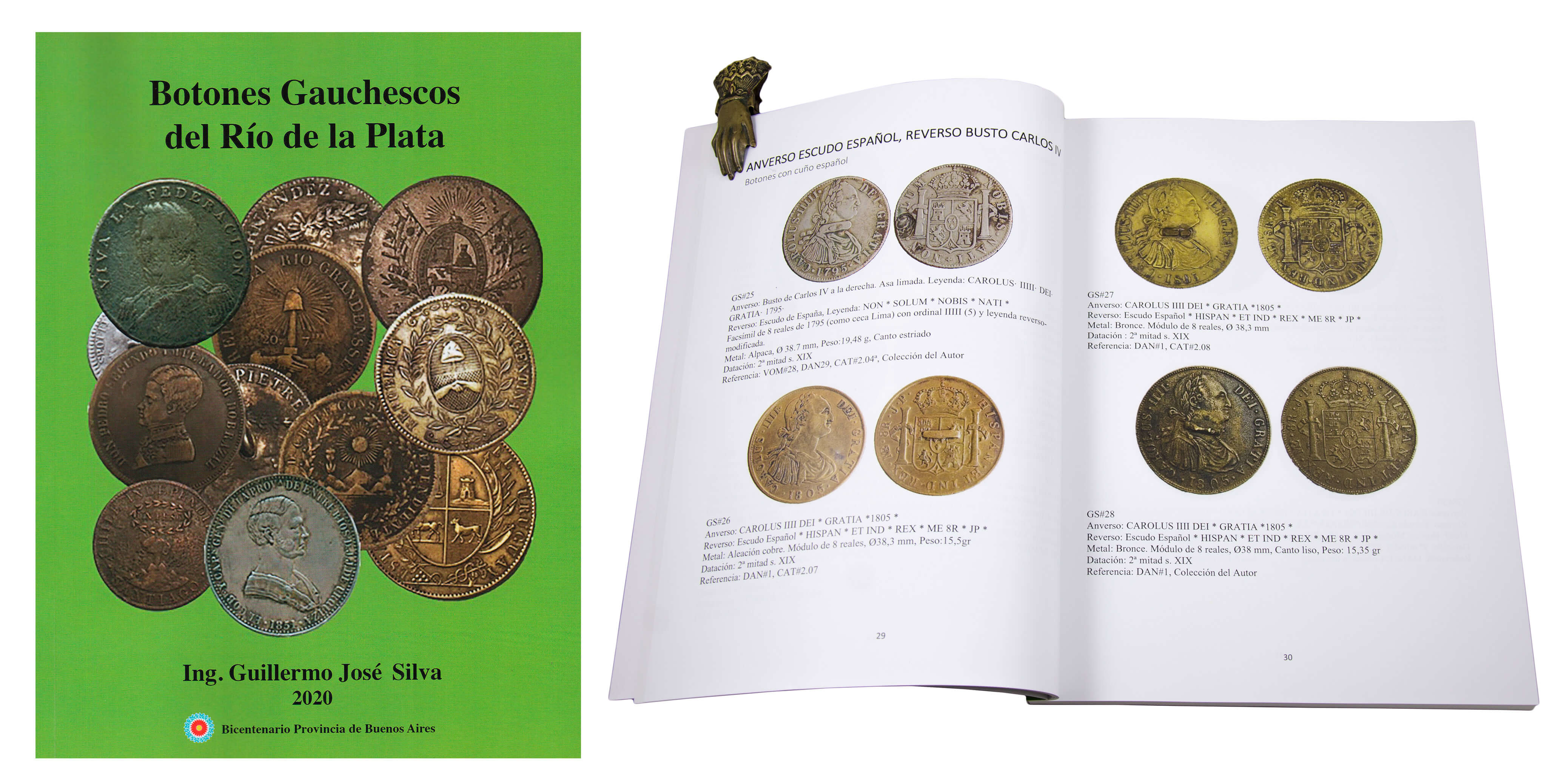
Gaucho buttons from the Río de la Plata.
Guillermo José Silva. Author's Edition. Buenos Aires. 2021.
Quarto (28 x 21.2 cm), 184 pp. Very illustrated work.
G. J. Silva ventures into a little-addressed subject, and he does so after a meticulous investigation that brought him closer to the scarce bibliography available to advance from that level. His work develops a historical journey -from the vice-royal era- and a geographical one -through South America-, including other specific chapters referring to these pieces with Masonic identity and even a market price guide -in dollars, of great interest to all collectors - to conclude with the techniques applied in the manufacture of this singular accessory in the gaucho's clothing.
It is an important contribution to the knowledge of an aspect little studied in the customs of the River Plate gaucho.
